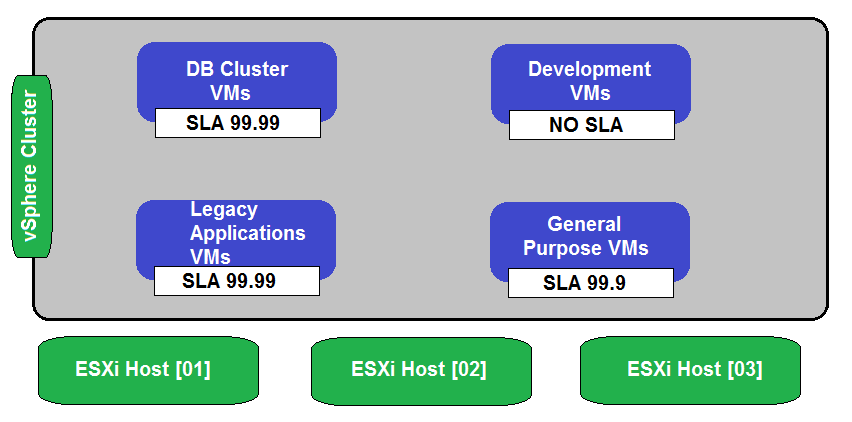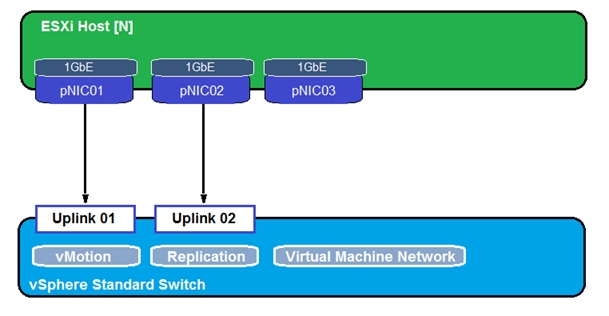VMware Advanced Design VMware vSphere 7.x 3V0-21.21 Exam Practice Test
An architect makes the design decision to install ESXi on embedded and resilient 8 GB SD cards.
What is the impact of this design decision?
Answer : B
https://kb.vmware.com/s/article/2074026 You can store coredumps on the SD boot media, but refrain from configuring the scratch partition here as the logs are write intensive and can cause the SD card to fail faster resulting in re-installation of ESXi
A configuration involving the usage of SD card or USB drives as boot media is a minimum of8 GB SD card or USB drive + Locally attached persistent storage device for ESX-OSData partitionmay be used but is also not recommended.Recommended list of locally attached storage devices are listed below.In any case, if an SD or USB device is used for boot media (only SD/USB or SD/USB + local HDD/SSD disk), follow the below instructions to reduce the amount of IO sent to the SD or USB boot media:Enable the ToolsRamDisk option to offload VMTools install/upgrade IO requests on the RAM disk.Ensure the/scratchpartition is configured on persistent storage like a local HDD/SSD or boot from the SAN device.
An architect is tasked with planning the design of a new vSphere environment. When commissioned, this environment will be used to migrate an existing set of virtual machines.
An inventory of the existing infrastructure, including configured vCPU, RAM and storage sizes has been provided.
In order for each virtual machine to be migrated, which two data sources with peak and average utilization data are required for sizing? (Choose two.)
Answer : C, E
'which two data sources with peak and average utilization data are required for sizing'
Only CPU and IOPS provide peak and average values. You could get them using for example vRealize Operations Manager.
https://sysarticles.com/vmware-vsphere-analyzing-the-current-state/
Which two of the listed requirements would be classified as performance non-functional requirements? (Choose two.)
Answer : B, D
Refer to the exhibit.
During a requirements gathering workshop, the customer shares the following diagram regarding their availability service-level agreements (SLAs):

The customer wants database application level availability to always take precedence. What should the architect recommend to meet the customer's requirement?
Answer : A
default is medium, lowest cannot address the requirement 'take precedence' to 'database application level'.
Refer to the exhibit.

During a requirements gathering workshop, the customer shares the following about their existing ESXi host virtual networking infrastructure:
The customer confirms that:
Each ESXi host has approximately 200 virtual machines.
They want to maximize the number of concurrent virtual machine migrations.
When placing a host in maintenance mode, it takes a long time to evacuate the virtual machines.
Which two recommendations should the architect make in order to help the customer overcome their challenge? (Choose two.)
Answer : B, E
10Gb maximizes the amount of bandwidth, as well as increases the number of potential simultaneous vmotions.
Which of the listed requirements would be classified as a recoverability non-functional requirement?
Answer : B
Recoverability - Easy to restore after an outage
Mesurements : MTD, RPO, RTO
An architect is designing a vSphere environment for a customer based on the following information:
The vSphere cluster will have three hosts only due to budget considerations.
A database cluster (node majority) consisting of three virtual machines will be running on the vSphere cluster.
Which two recommendations can the architect make so that the customer achieves the highest level of
application availability while taking into consideration operational resiliency? (Choose two.)
Answer : A, B
A) Create VM-VM anti-affinity rules - A VM-VM affinity rule specifies whether selected individual virtual machines should run on the same host or be kept on separate hosts. https://docs.vmware.com/en/VMware-vSphere/7.0/com.vmware.vsphere.resmgmt.doc/GUID-94FCC204-115A-4918-9533-BFC588338ECB.html B. Set das.respectvmvmantiaffinityrules to false - Determines if vSphere HA enforces VM-VM anti-affinity rules. The default value is 'true' and rules are enforced even if vSphere DRS is not enabled. In this case, vSphere HA does not fail over a virtual machine if doing so violates a rule